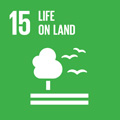- Docente: Stefano Claudio Vaiani
- Credits: 12
- SSD: GEO/01
- Language: Italian
- Moduli: Stefano Claudio Vaiani (Modulo 1) Alessandro Gargini (Modulo 2) Roberto Braga (Modulo 3) Veronica Rossi (Modulo 4)
- Teaching Mode: Traditional lectures (Modulo 1) Traditional lectures (Modulo 2) Traditional lectures (Modulo 3) Traditional lectures (Modulo 4)
- Campus: Bologna
- Corso: Second cycle degree programme (LM) in Teaching and Communication of Natural Sciences (cod. 5704)
-
from Sep 30, 2024 to Oct 16, 2024
-
from Oct 21, 2024 to Oct 23, 2024
-
from Nov 13, 2024 to Dec 11, 2024
-
from Nov 04, 2024 to Nov 11, 2024
Learning outcomes
At the end of the course, the student knows: (a) the endogenous and exogenous processes of planet Earth and those that characterize the dynamic evolution of the lithosphere; (b) the fundamentals of crustal deformations; (c) the different architectures of sedimentary successions and their stratigraphic structure; (d) the basics to classifiy minerals and rocks, the mineral-petrographic genesis and for the reading of geological and geomorphological maps; (e) the fundamentals of geological risk and its characteristics in the interactions between natural phenomena and anthropic activities.
Course contents
- The fundamentals of the discipline with particular reference to the earth sciences targets as reported in the guidelines for secondary school: Earth in space; the surface of the planet (endogenous and exogenous processes); minerals and rocks (definition and recognition, classification elements); geological time and fossils; sedimentary successions and palaeoenvironmental reconstructions; volcanoes (forms and products of volcanic activity) and earthquakes (their meaning and distribution, the tsunamis); the structure of the Earth in a geodynamic perspective; plate tectonic; the geological maps; the future of Earth (climate change and palaeoclimatology).
- The interactions between geological processes and anthropic activity. Geological risks: forecasting, prevention and mitigation. Climate change and management of groundwater resources.
- The Module 3 deals with Geology Education in secondary schools and covers the following topics:
- Geology and Earth Sciences as scientific disciplines
- Earth sciences in secondary education: Italian national indications for lyceum and guidelines for technical and vocational schools
- Analysis and resolution of the most common misconceptions in geology
- Hands-on experiences for teaching geology in the classroom
- Applications of generative artificial intelligence (e.g.: chatGPT; Copilot) in geology teaching
- Teaching geology and civic education: geo-resources and sustainability
Readings/Bibliography
The teaching material used during the lectures, as well as scientific articles, book chapters and other edu support from the specialized literature will be provided during the course by the teachers
Selected references:
-
- Bosellini A. 2020. Le Scienze della Terra, minerali e rocce, vulcani, terremoti, tettonica delle placche, atmosfera, clima. Zanichelli ed.
- Grotzinger JP, Jordan Thomas H, 2016. Capire la Terra. Zanichelli ed., pp. 752.
- Ricci Lucchi M, 2019. La Terra, un'introduzione al pianeta vivente. Zanichelli ed., pp. 256.
- Canuti P, Crescenti U, 2008. Geologia Applicata all’Ambiente, CEA ed., pp. 448.
- Klein C, Philpotts AR, 2018. Mineralogia e Petrografia. Zanichelli ed., pp. 532.
- Chris King (2008) Geoscience education: an overview, Studies in Science Education, 44:2, 187-222.
Teaching methods
Frontal lecture in classroom and field, group work. The lectures aim to present different teaching approaches to motivate the student to learn Earth sciences. Group work will be finalised to facilitate active and collaborative learning between students and teachers.
For those who cannot attend the module 3 (Geology Education), we offer three online meetings. Meetings will be held on the MSTeams platform at the beginning, middle and end of Module 3. The meetings will take place at around 19:00. and will last approximately one hour. Apart from the opportunity to keep in touch with the instructor, the online meetings will allow for discussion of contents and topics covered during the classroom lectures. These meetings are not a replay of the classroom lectures but rather a support to browse through the topics, an opportunity to ask questions and to locate the study material. The exact dates of the meetings will be announced as soon as the class schedule is known. Links to connect will be provided by the instructor via email.Assessment methods
The exam consists of the presentation and discussion of a final project in PowerPoint format or an equivalent, in which the candidate presents a teaching unit on topics agreed upon with the teacher and covered during the course. The title of the project should be communicated to and approved by the teacher at least ten days before the exam.
The organization of the teaching unit is substantially free. As a pure example, the student might consider addressing the following points: 1) the topic of the teaching unit; 2) the target audience; 3) the educational objectives; 4) the number of hours considered as necessary for adequate learning; 5) the topics that should already know to understand the contents of the teaching unit; 6) the methods of execution; 7) the possible ways of assessing learning; 8) a concluding summary of the concepts presented and acquired at the end of the teaching unit.
The presentation should last no more than 20 minutes. At the end of the presentation, the committee will ask the student some questions about the presentation and the contents of all the lessons, including those in the field. It is important that the student demonstrates to the committee an understanding of the essential concepts of geology and the specialized terminology. Students who have not participated in field activities will need to answer some questions on the content present in the dedicated "guide texts" provided by the teachers on Virtuale.
Teaching tools
Personal computer, video projector, power-point presentations, optical microscopy lab. edu. collections of minerals, rocks and fossils.
Office hours
See the website of Stefano Claudio Vaiani
See the website of Alessandro Gargini
See the website of Roberto Braga
See the website of Veronica Rossi
SDGs


This teaching activity contributes to the achievement of the Sustainable Development Goals of the UN 2030 Agenda.
